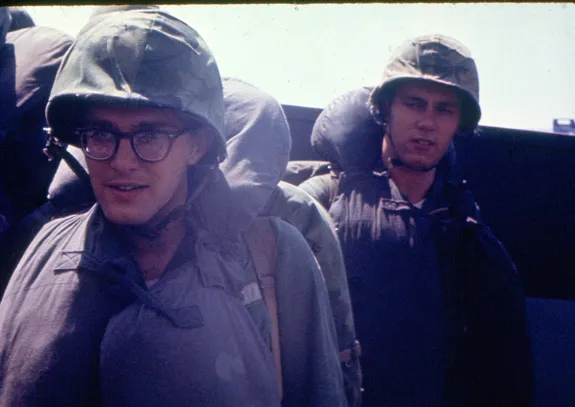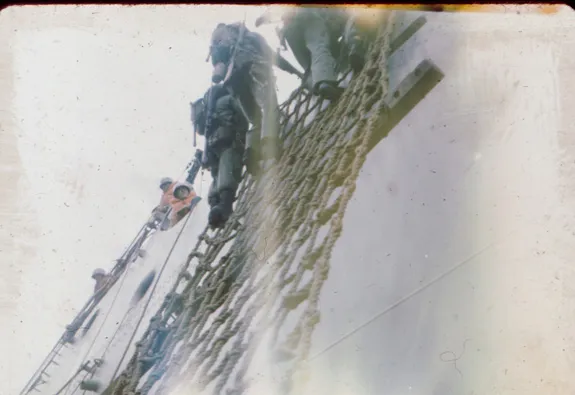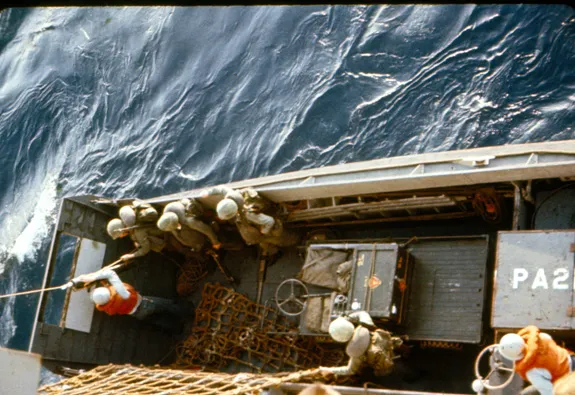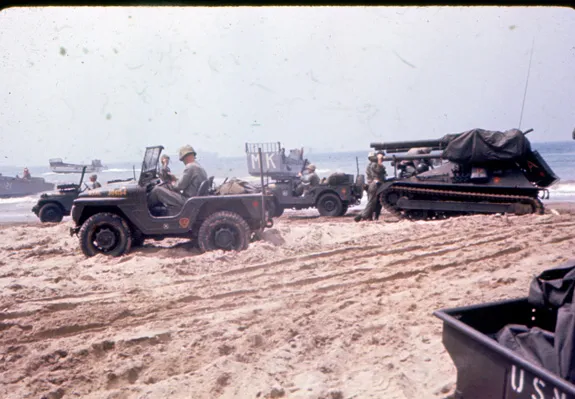Never-Before-Seen Photos Taken 50 Years Ago During Preparations for Cuba Invasion
During the dark days of October 1962, Marines trained on the Puerto Rican island of Vieques to train for an amphibious assault on Cuba
/https://tf-cmsv2-smithsonianmag-media.s3.amazonaws.com/filer/Cuban-Missile-Crisis-invasion-prep-631.jpg)
![]() Fifty years ago today, at the outset of the Cuban missile crisis, military exercises began under the code name Operation ORTSAC (Castro in reverse). On October 14, 1962, a U2 spy plane captured photographs that sparked the beginning of the crisis. CIA analysts identified “San Cristobal No. 1″, a medium-range ballistic missile site, capable of launching nuclear weapons nearly 1200 miles. Three days later, on October 17, 1962, more than 40 U.S. warships headed to Vieques, off the coast of Puerto Rico, for training exercises. The Joint Chiefs had been planning scenarios for an amphibious assault on Cuba for months, but President Kennedy, still smarting from placing his trust in the military leaders during the failed Bay of Pigs invasion, was reticent to pursue military action.
Fifty years ago today, at the outset of the Cuban missile crisis, military exercises began under the code name Operation ORTSAC (Castro in reverse). On October 14, 1962, a U2 spy plane captured photographs that sparked the beginning of the crisis. CIA analysts identified “San Cristobal No. 1″, a medium-range ballistic missile site, capable of launching nuclear weapons nearly 1200 miles. Three days later, on October 17, 1962, more than 40 U.S. warships headed to Vieques, off the coast of Puerto Rico, for training exercises. The Joint Chiefs had been planning scenarios for an amphibious assault on Cuba for months, but President Kennedy, still smarting from placing his trust in the military leaders during the failed Bay of Pigs invasion, was reticent to pursue military action.
Bill Ober, now of Huntington, New York, was one of the Marines on Vieques (Blue Beach to be specific). After reading Michael Dobbs’ story in the October issue of Smithsonian, Ober passed along these never-before-seen photographs of what the training exercises entailed:




Dobbs is also the author of One Minute to Midnight, a tick-tock history of the crisis. Almost a week into the events, shortly after Kennedy addressed the country in a televised speech, the President cancelled the training on Vieques as the military advanced to DEFCON 2. Dobbs writes about the invasion preparations:
The plan was for the Marines to attack east of Havana, at Tarara , while the 1st Armored Division landed through the port of Mariel to the west. In the meantime, the 101st and 82nd Airborne divisions would conduct a paratroop assault behind enemy lines. In its initial sweep, the invading force would skirt Havana and head directly for the missile sites. …
Whatever happened, casualties were likely to be heavy. The Marines were prepared for five hundred dead the first day alone –mainly on Tarara beach — and a further two thousand injured. Total casualties during the first ten days of fighting were estimated at over eighteen thousand, including four thousand dead. The Marine Corps would account for nearly half.
Fortunately, no such attack ever happened. The naval quarantine of Cuba was successful and Kennedy and Premier Khrushchev negotiated a gradual stand-down, with the Soviet Union pulling their missiles out of Cuba and the United States eventually removing theirs (covertly) from Turkey. If you’re interested in more about the crisis and how the Kennedy administration avoided nuclear war (and having to send Ober and his fellow Marines into battle), check out the JFK Library’s stunning “Clouds Over Cuba” package. It has more video and primary source materials than any history buff could ever want.
More from Smithsonian.com:
Document Deep Dive: What Did Analysts Find in the Recon Photographs From the Cuban Missile Crisis?
/https://tf-cmsv2-smithsonianmag-media.s3.amazonaws.com/accounts/headshot/brian.png)
/https://tf-cmsv2-smithsonianmag-media.s3.amazonaws.com/accounts/headshot/brian.png)